Lab Safety Equipment: The Essentials
December 6, 2022
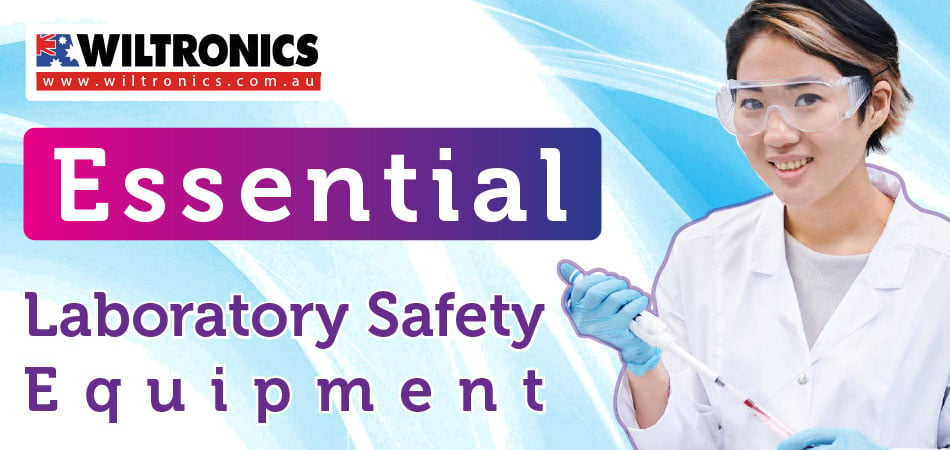
Conduct research out of harm’s way with accessible lab safety equipment.
Dangerous chemicals, high-risk procedures, and fire hazards, to name a few. A laboratory can be a risky workplace, posing potential threats.
Thus, preventive measures are of paramount importance. They help you avoid any mishap with little worry and easily adhere to prescribed safety guidelines.
To comply with that, you will need a set of lab safety equipment, depending on the lab application. Listed below are the essentials to keep the workforce safe.
Lab Safety Equipment
Laboratory equipment is not just about Bunsen burners and microscopes. With injuries and life-threatening situations on the line, protection tools are an important component.
Take working with infectious blood, for example. Clearly, that is hazardous, and it should not pass through your clothes and onto your skin. Such skin contact exposure can cause temporary or, worse, permanent health damage.
Other lab potential risks include exposure to corrosive and toxic materials. Explosive chemicals, flammable solvents, high-pressure gases, and dangerous microbes.
It is also important to know how and when to use certain equipment besides taking measures.
The Essentials
To ensure you are completely safe from those hazards, here are some of the must-have lab equipment. Starting off with protective gloves.
1. Protective Gloves
The hands are more at risk of coming into contact with hazardous chemicals. For this reason, gloves must be worn based on an appropriate risk assessment.
No excuses, even if experimenting with tightly closed containers or a closed system. Wear safety gloves when handling the following:
- Hazardous materials
- Chemicals of unknown toxicity
- Corrosive items
- Rough or sharp-edged objects
- Very hot or cold substances
A pair should be comfortable and of sufficient length to prevent hand and wrist exposure. Most importantly, gloves should be appropriate for the type of work. Be sure to have both reusable gloves such as those that are heat resistant and/or insulated, as well as disposable gloves for dealing with contaminants.
There are three common types of disposable gloves used in labs, and these are latex, nitrile and vinyl. Know the level of protection you need to get the best possible type for your work.
Inspect for visible tears before use, change when compromised, and discard after use. Wash your hands afterwards to avoid any contamination.
We offer a wide range of disposable gloves that are perfect for examination and dissection. You can choose from the following:
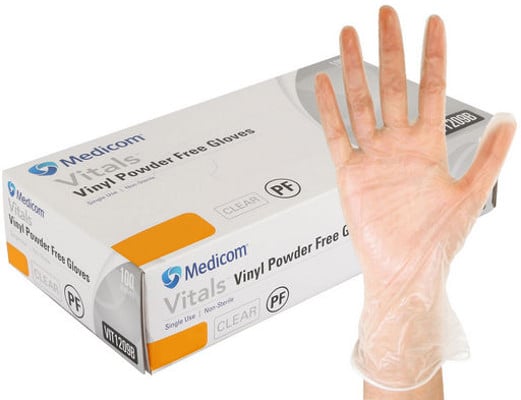
Vinyl Gloves – Disposable, 100pc, Powder Free, Clear
Product code: LS300x
Clear, disposable vinyl gloves in a pack of 100 – non-sterile and powder-free. Each glove features a smooth finish for increased tactile sensitivity and comfort.
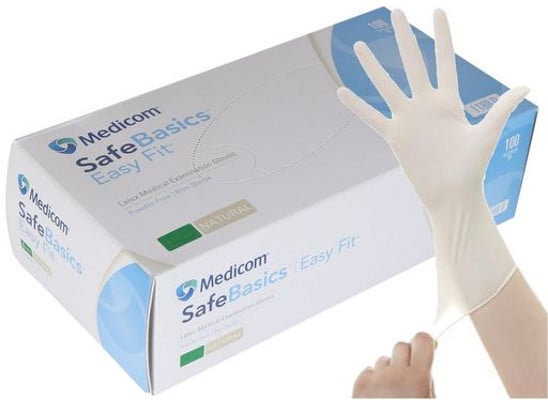
Latex Gloves – Disposable, 100pc, Powder Free, Beige
Product code: LS100x
Beige, disposable latex gloves in a pack of 100. These non-sterile latex gloves are powder-free and easy to fit.
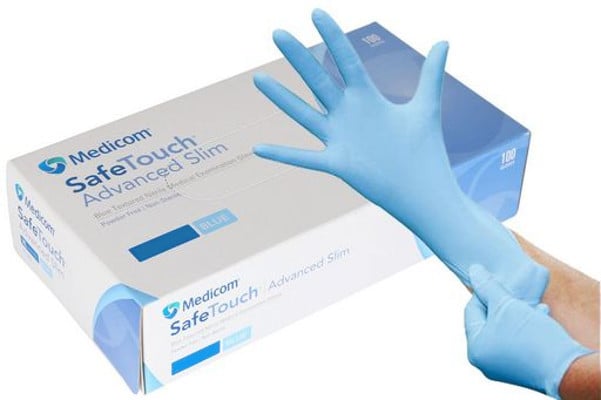
Nitrile Gloves – Disposable, 100pc, Powder Free, Blue
Product code: LS410x
Blue, disposable nitrile gloves in a pack of 100. These non-sterile nitrile gloves provide extra protection from tears and punctures.
They are also powder-free and have a textured surface for easier grip.
2. Lab Coats
Lab coats must be worn whenever working in the laboratory or clinical areas. They offer protection of skin and personal clothing against accidental spills or contact.
Other purposes include:
- Prevent the spread of contamination outside the lab.
- Act as a removable barrier in case of a spill or splash from hazardous substances.
Laboratory coats are typically long-sleeved, white, knee-length coats made from absorbent materials. Should a chemical spill occur, it should be promptly removed.
Doing so will hinder such chemicals from soaking through to the skin. For ultimate protection, a lab coat should be buttoned closed.
If you are on the hunt for the perfect coat, consider this Terylene cotton-made lab coat. It’s durable and hard-wearing for even the busiest lab. Available in small, medium and large, you can have a new lab coat for the price that others sell second-hand.
3. Safety Glasses
The eyes are vulnerable when exposed to hazardous chemicals and materials in the lab. Enter safety glasses. They protect your eyes from moderate impact and particles associated with minor splashes.
They act as a shield, allowing you to carry on with your experiment. There are various types of safety glasses available. Choosing the best style for the right job is essential.
For one, if you work with chemical substances, go for splash or chemical safety goggles. Other types are also specifically designed for laser or UV light hazards protection.
Generally, your safety glasses should be comfortable while fitting properly around your eyes. And always ensure to keep them disinfected and sanitised after use.
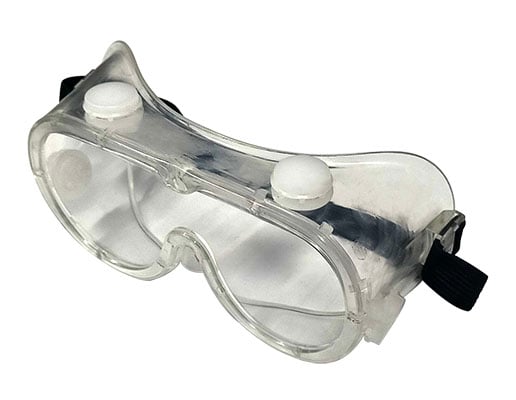
Safety Splash Goggles / Vented Anti-Fog
Product code: LS0540
Features indirect venting to protect against chemical splashes. Made from polycarbonate PC and lenses that protect from medium impact.
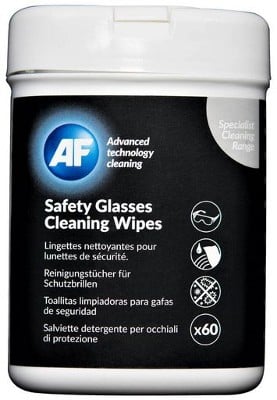
Safety Glasses Cleaning Wipes – Tub of 60
Product code: LS0592
A handy pack of impregnated wipes for cleaning personal protective/safety glasses equipment. Designed to target grease and dust on work environment-based equipment.
4. Disposable Masks
Face masks complete the protective barrier for the face. Wearing one helps prevent large droplets or splattering from entering the mouth/nose.
Surgical masks are a great example. But keep in mind that they are not respirators. They do not protect the wearer from breathing in small particles, gases, or chemicals in the air.
The protective quality varies depending on the material. Here, we offer disposable, antibacterial face masks.
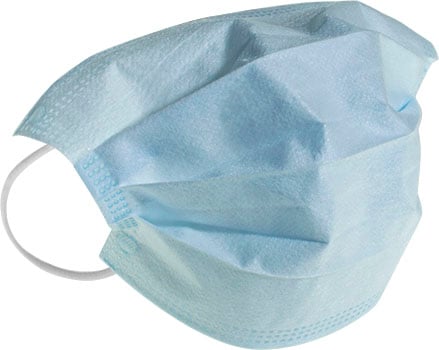
Face Mask – Antibacterial, Disposable, 3 Layer
Product code: LS1358
These handy disposable, antibacterial face masks are CE and FDA-approved. Each face mask is made of three-layer non-woven fabric and meets EN149 standards.
Protect yourself in comfort with these easily breathable face masks! Not for surgical use.
5. First Aid Kit
Laboratory hazards and risks are always present. Hence why this safety equipment exists in the first place.
For that reason, injuries can occur that need immediate on-site attention and treatment. This is where first aid kits are important.
First aid kits should always be restocked, stored in accessible locations, and include the following:
- Bandages
- Tweezers
- Wipes
- Gauze
- Sterile and eye dressings
- Antiseptic cream
- Scissors
- Anything that can treat cuts, burns, scrapes, sprains, and other common ailments
No matter the injury, a first aid kit can help prevent infection and reduce its severity.
6. Fire Blankets
The fire blanket is a versatile, one-use safety aid. It can easily suffocate a small fire and can be used without special training.
In the lab, for instance, it is useful for containing and controlling chemical spills. If your clothing ignites, this specially designed blanket can help smother the flames.
It also makes suitable personal protection during a fire evacuation. As with other equipment, fire blankets should be kept in unobstructed, accessible areas.
7. Laboratory-Safe Refrigerators
Most laboratories have chemicals, samples, and liquids around. It only makes sense to store them in cool and safe environments.
A laboratory-safe refrigerator is a good bet. It is designed with safety features like compressors. Most units also feature no ignition source, magnetic door gaskets and self-closing doors.
All samples should be labelled using waterproof ink or labels. When storing flammable chemicals, ensure there are no potential sources of electrical sparks inside. Make modifications to the refrigerator, if necessary, to ensure this.
The Bottom Line
Laboratory hazards should not scare you, instead, they should be challenging and exciting. For one, you get an opportunity to study materials having different commercial applications.
But remember, you are responsible for your safety as well as for others working around you. It should come naturally to you and become a habit.
This is why one should always provide lab safety equipment in any laboratory.
© Electrotech Brands Pty Ltd 2022


Write a Comment
You must be logged in to post a comment.